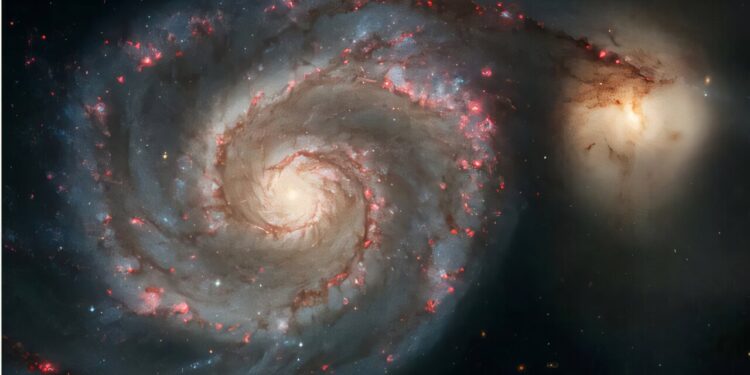The Whirlpool galaxy, M51, is a spiral galaxy located 31 million light years. Credit: NASA
A new study in Monthly opinion from the Royal Astronomical Society By researchers like ISTVán Szapudi from the University of Hawaii at the Mānoa Institute for Astronomy suggests that the universe can turn, just extremely slowly. The observation could help resolve one of the biggest puzzles in astronomy.
“To paraphrase the Greek philosopher Heraclitus of Ephesus, who said ‘` Panta Rhei’ ‘(everything moves), we thought that perhaps Panta Kykloutai – all that does, “said Szapudi.
Current models say that the universe develops uniformly in all directions, without a sign of rotation. This idea corresponds to most of what astronomers observe. But that does not explain the so -called Hubble tension – a long -standing disagreement between two ways to measure the speed at which the universe develops.
Supernovae, Big Bang
A method examines the stars or distant explosive supernovae, to measure distances from galaxies, and gives an expansion rate for the universe in the past billions of years. The other method uses the relic radiation of Big Bang and gives the expansion rate of the very early universe, about 13 billion years ago. Each gives a different value for the expansion rate.
The Szapudi team has developed a mathematical model of the universe. First of all, he followed the standard rules. Then they added a small amount of rotation. This little change made a big difference.
“To our surprise, we have found that our model with the rotation solves the paradox without contradicting current astronomical measures. Better still, it is compatible with other models which suppose rotation. Therefore, perhaps everything really turns. Or, Panta Kykletai,” noted Szapudi.
Their model suggests that the universe could turn once every 500 billion years – too slow to detect easily, but enough to affect the way space develops over time.
The idea does not break any known laws of physics. This could also explain why the measures of the growth of the universe do not quite agree.
The next step is to transform the theory into a complete computer model and find ways to identify the signs of this slow cosmic rotation.
More information:
Can Baláz Endre Szigeti et al, can rotation solve the Hubble puzzle ?, Monthly opinion from the Royal Astronomical Society (2025). DOI: 10.1093 / Mnras / Staf446
Provided by the University of Hawaii in Manoa
Quote: A slowly rotation universe could resolve the Hubble tension (2025, April 14) recovered on April 15, 2025 from
This document is subject to copyright. In addition to any fair program for private or research purposes, no part can be reproduced without written authorization. The content is provided only for information purposes.



